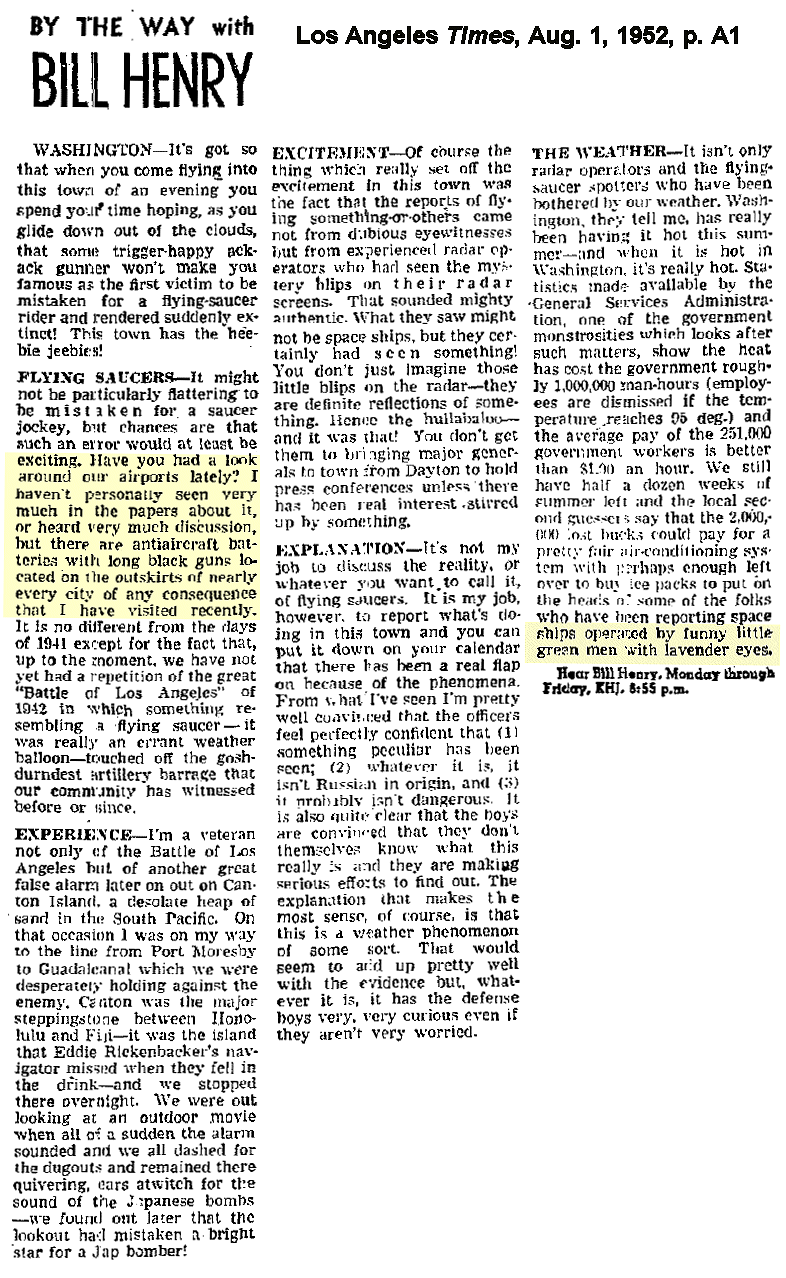This Los Angeles Times column below from August 1, 1952, by well-known reporter Bill Henry, mentions the nation's major airports being surrounded by antiaircraft guns because of the flying saucer situation. Thus the "shootdown" order against the saucers put into effect in late July 1952 may have also involved the Army, in addition to Air Force jet interceptors.
According to other articles in the L.A. Times, antiaircraft bateries had been placed around major cities, strategic defense plants, and key Air Force centers by mid-June, to defend against possible Russian bomber attacks. An extensive, 24-hour, civilian skywatch program was also in place by mid-July. This was at the height of the Korean War, so the reason given for the heightened defense certainly has plausibility. However, Henry associated the AA guns with defense against the flying saucers. Perhaps both interpretations are true. The AA guns were originally put in place to defend against air attack from Russia, but as the reports of flying saucers intensified in June and July, climaxing in the radar/jet intercepts over Washington D.C. in late July 1952, the AA guns were also involved in the "shootdown order" against the saucers, another type of air invader.
This article also mentions the March 1942 "Battle of Los Angeles," where an unidentified object over Los Angeles led to a massive antiaircraft barrage. (Steven Spielberg's movie "1942" is very loosely based on this event.) Some think this may have been a genuine UFO incident. Reporter Henry was an eyewitness and wrote in the Times, "I was far enough away to see an object without being able to identify it... I would be willing to bet what shekels I have that there were a number of direct hits scored on the object." In this article, Henry expresses the opinion the object was nothing but a misidentified weather balloon.
See also last sentence where the term "little green men" is used by Henry. According to computer searches, this was the first such instance in the L.A. Times where the term was applied to flying saucer occupants. (It had also used by gossip columnist Hedda Hopper in 1939 to refer to small cast members of the Wizard of Oz and in 1942 in a disparaging way to green camouflaged Japanese soldiers.)
Henry had been a journalist since 1911. He was awarded the Presidential Medal of Freedom in 1970, shortly before his death, for his lengthy and pioneering career in journalism.

